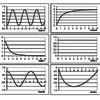Skip over navigation



Or search by topic
Number and algebra
Geometry and measure
Probability and statistics
Working mathematically
Advanced mathematics
For younger learners
Advanced Scientific Mathematics
Age 16 to 18
Challenge Level 





| stemNRICH : Science, Technology, Engineering, Mathematics enriched | |||||
 |
 |
 |
|||
Welcome to the Advanced Scientific Mathematics section of stemNRICH . This contains a set of activities designed to develop the advanced applied mathematical skills needed to make the most of the study of the physical sciences or engineering at university. These problems
naturally follow on from the more elementary core scientific mathematics section of stemNRICH and are primarily intended for those who intend to study physics, engineering or applied mathematics at university.
| Area of maths | Style | Question | Description |
|---|---|---|---|
| Rates of change |  |
Maths Filler 2 | Practise looking at rates of change as this vessel fills with water. |
| Immersion | Various solids are lowered into a beaker of water. How does the water level rise in each case? | ||
 |
Brimful | Rotate the curves to make some mathematical vessels. | |
 |
Brimful 2 | Which of these mathematical flasks will eventually fill up with water? | |
| Curves | Curve Fitter | Use your skill to try to fit a cubic equation through these three points. | |
 |
Curve Fitter 2 | Can you make a cubic which has a certain distance between the turning points? | |
 |
Implicitly | Can you find the shape of this implicity defined function? | |
 |
Whose line graph is it anyway? | Which line graphs, processes and equations go together? | |
 |
Can you sketch these difficult curves, which have uses in mathematical modelling? | ||
| Calculus | Calculus is involved in many problems on stemNRICH. See the physNRICH and engNRICH pages for various particular examples. | ||
| Can you hit the target functions using a set of input function and a little calculus and algebra? | |||
| Integration Matcher | Which curves, integrals and differentials go together? | ||
 |
What functions can you make using the function machines RECIPROCAL and PRODUCT and the operator machines DIFF and INT? | ||
| Differential equations | You will also find lots of differential equations problems in various sections on the physNRICH and engNRICH pages | ||
| Differential Equation Matcher | Match the descriptions of physical processes to these differential equations. | ||
 |
Explore the possible mathematical solutions to the non-linear order of reaction equation from chemistry. | ||
| Series and expansions |  |
Production Equation | Each week a company produces X units and sells p per cent of its stock. How should the company plan its warehouse space? |
 |
Stirling Work | See how enormously large quantities can cancel out to give a good approximation to the factorial function. | |
 |
What Do Functions Do for Tiny x? | How do these familiar functions behave for very small values? | |
 |
Get further into power series using the fascinating Bessel's equation. | ||
| Powers, roots and logarithms | See also the Logarithms and pH problems on the chemNRICH pages | ||
| Power Match | Can you locate these values on this interactive logarithmic scale? | ||
 |
Debt Race | Who will be the first investor to pay off their debt? | |
| Probability and distributions | pdf Matcher | What scientific stories can you match to these pdf curves? | |
 |
Circle PDF | How can an arc of a circle be a pdf? | |
 |
Scale Invariance | By exploring the concept of scale invariance, find the probability that a random piece of real-world data begins with a 1. | |
| Into the Exponential Distribution | Get into the exponential distribution through an exploration of its pdf. | ||
| Into the Normal Distribution | Get into the normal distribution through an exploration of its pdf. | ||
| Statistics | Stats Statements | This question gives you 10 statistical statements. Develop your statistical intuition by asking yourself are they sometimes, always, nearly always, almost never or never true?' | |
 |
Overbooking | Why do airlines overbook? | |
| The Wrong Stats | Why MUST these statistical statements be at least a little bit wrong? | ||
 |
Aim High | How much wheat should this farmer plant to minimise his expected loss? | |
| Time to Evolve 2 | How would you model the time between your birth and that of your grandfather? | ||
| Trigonometry |  |
Flight Path | Use simple trigonometry to calculate the distance along the flight path from London to Sydney. |
 |
Loch Ness | Draw graphs of the sine and modulus functions and explain the humps. | |
 |
Spherical Triangles on Very Big Spheres | Find out about spherical triangles and decide if telecoms engineers need to know about such things. | |
 |
Taking Trigonometry Seriesly | Look at the advanced way of viewing sin and cos through their power series. | |
| Complex numbers |  |
A nice introduction to complex numbers, including many exercises for the reader. | |
| More on the way | More on the way | ||
| Vectors | Spotting the Loophole | A visualisation problem in which you search for vectors which sum to zero from a jumble of arrows. Will your eyes be quicker than algebra? | |
| Starting with two basic vector steps, which destinations can you reach on a vector walk? | |||
| Follow Ulaf, Vicky and Wilber on a vector walk to determine the locations nearest to the origin. | |||
 |
Air Routes | An application of vectors and scalar products in a very practical setting. | |
 |
Explore the meaning of the scalar and vector products and see how the two are related | ||
| Vectors and matrices | What quadrilaterals can you transform this pair of squares into? | ||
| Explore the mathematics of matrix transformations with these 10 individual questions. | |||
| Explore the algebraic and geometric properties of matrices with these 5 individual questions. | |||
 |
Crystal Symmetry | Use vectors and matrices to explore the symmetry properties of Caesium Chloride. | |
 |
Explore how matrices can fix vectors and vector directions.? | ||
 |
Can you make matrices which will fix one lucky vector and crush another to zero? | ||
| Numerical methods | Root Hunter | In this short problem, try to find the location of the roots of some unusual functions by finding where they change sign. | |
 |
Building Approximations for Sin(x) | Build up the concept of the Taylor series. | |
| Decision making and algorithms | Testing Strategy | Investigate ways in which you could implement a scoring system for a multiple choice test. | |
| . | . | . | |
You may also like
Ball Bearings
If a is the radius of the axle, b the radius of each ball-bearing, and c the radius of the hub, why does the number of ball bearings n determine the ratio c/a? Find a formula for c/a in terms of n.
Overarch 2
Bricks are 20cm long and 10cm high. How high could an arch be built without mortar on a flat horizontal surface, to overhang by 1 metre? How big an overhang is it possible to make like this?
Cushion Ball
The shortest path between any two points on a snooker table is the straight line between them but what if the ball must bounce off one wall, or 2 walls, or 3 walls?




